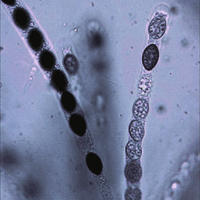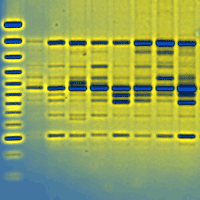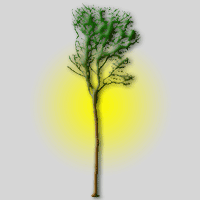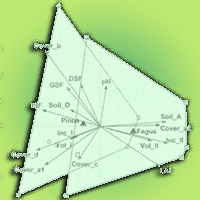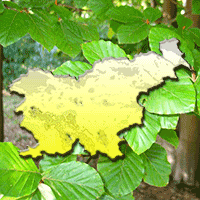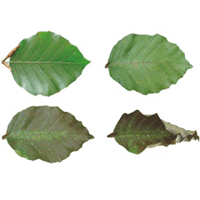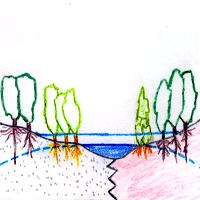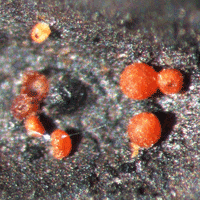
Kretzschmaria deusta, a limiting factor for survival and safety of veteran beech trees in Trentino (Alps, Northern Italy)
Giorgio Cordin (1), Giorgio Messina (2) , Giorgio Maresi (1), Fabio Zottele (1), Fabrizio Ferretti (3), Lucio Montecchio (4), Claudia Maria Oliveira Longa (5)
iForest - Biogeosciences and Forestry, Volume 14, Issue 6, Pages 576-581 (2021)
doi: https://doi.org/10.3832/ifor3830-014
Published: Dec 18, 2021 - Copyright © 2021 SISEF
Research Articles
Abstract
The importance of veteran trees is well recognised nowadays. The sudden breakage of some of these plants in Trentino (Italy), mainly due to Kretzschmaria deusta, prompted a survey of the veteran beeches reported in this area. Visual tree assessment was carried out in 40 sites with either single trees or groups of beeches, for a total of 115 trees evaluated. Most trees showed serious defects or problems in need of management and 19 had a high level of risk of breakage because of the presence of several structural problems. The presence of K. deusta was recorded on 50.4% of the examined trees. The pathogen was also identified in the proximity of investigated trees at 29 sites. Laboratory tests confirmed the identity of K. deusta by microbiological and molecular approaches and also identified Cosmopora berkeleyana as mycoparasite on K. deusta fruiting bodies. Isolates obtained from declining trees and old stumps showed the same pattern of growth at different temperatures. The risk evaluation emphasised how the fungus could affect the survival and safety of these veteran trees; this was confirmed by the collapse of four of the investigated trees in the last years. Therefore, K. deusta, which has been considered as a facultative parasite up to now, could play a more incisive role both in the decline of old beech trees and the natural evolution of aging beech woods.
Keywords
Fagus sylvatica, Xilariaceae, Brittle Cinder, Soft-rot, Visual Tree Assessment, Veteran Tree Conservation
Authors’ Info
Authors’ address
Giorgio Maresi 0000-0001-6806-6135
Fabio Zottele 0000-0002-1015-5511
Fondazione Edmund Mach, Technology Transfer Centre, v. E. Mach 1, 38010 San Michele all’Adige, TN (Italy)
Forest Service, Autonomous Province of Trento - PAT, v. G.B. Trener, 3 - 38121 Trento (Italy)
CREA Research Centre for Forestry and Wood, v.le Santa Margherita 80, 52100 Arezzo (Italy)
University of Padova, Department of Land, Environment, Agriculture and Forestry,v.le dell’Università 16, 35020 Legnaro, PD (Italy)
Fondazione Edmund Mach, Research and Innovation Centre, Department of Sustainable Agroecosystems and Bioresources, San Michele all’Adige, TN (Italy)
Corresponding author
Paper Info
Citation
Cordin G, Messina G, Maresi G, Zottele F, Ferretti F, Montecchio L, Oliveira Longa CM (2021). Kretzschmaria deusta, a limiting factor for survival and safety of veteran beech trees in Trentino (Alps, Northern Italy). iForest 14: 576-581. - doi: 10.3832/ifor3830-014
Academic Editor
Alberto Santini
Paper history
Received: Mar 27, 2021
Accepted: Oct 29, 2021
First online: Dec 18, 2021
Publication Date: Dec 31, 2021
Publication Time: 1.67 months
Copyright Information
© SISEF - The Italian Society of Silviculture and Forest Ecology 2021
Open Access
This article is distributed under the terms of the Creative Commons Attribution-Non Commercial 4.0 International (https://creativecommons.org/licenses/by-nc/4.0/), which permits unrestricted use, distribution, and reproduction in any medium, provided you give appropriate credit to the original author(s) and the source, provide a link to the Creative Commons license, and indicate if changes were made.
Web Metrics
Breakdown by View Type
Article Usage
Total Article Views: 32686
(from publication date up to now)
Breakdown by View Type
HTML Page Views: 28514
Abstract Page Views: 1852
PDF Downloads: 1859
Citation/Reference Downloads: 4
XML Downloads: 457
Web Metrics
Days since publication: 1456
Overall contacts: 32686
Avg. contacts per week: 157.14
Citation Metrics
Article Citations
Article citations are based on data periodically collected from the Clarivate Web of Science web site
(last update: Mar 2025)
Total number of cites (since 2021): 3
Average cites per year: 0.60
Publication Metrics
by Dimensions ©
Articles citing this article
List of the papers citing this article based on CrossRef Cited-by.
References
Fenomeni di deperimento e moria in popolamenti artificiali misti di latifoglie e conifere [Decline and death phenomena in mixed artificial stands of conifers and deciduos trees]. Annali dell’Accademia Italiana di Scienze Forestali 52: 3-30. [in Italian]
Gscholar
Linee guida per gli interventi di cura e salvaguardia degli alberi monumentali [Guidelines for monumental trees management]. Alberi Monumentali d’Italia, Direzione Generale Delle Foreste-Regioni, Ministero delle politiche agricole alimentari e forestali - MiPAAF, Rome, Italy, pp. 57. - [in Italian]
Online | Gscholar
Ancient and other veteran trees: further guidance on management. The Tree Council, London, UK, pp. 212.
Gscholar
Kretzschmaria deusta, a common decay fungus you may not recognize. Tree Care Industry 28: 24-29.
Gscholar
Evaluation of hazard trees in urban areas (2nd edn). International Society of Arboriculture - ISA, Champaign, IL, USA, pp. 85.
Gscholar
Sanasilva - Le chiome degli alberi [Sanasilva - The tree canopy]. Swiss Institute for Forest, Snow and Landscape Research, Birmensdorf, Switzerland, pp. 129. [in Italian]
Gscholar
Contrasting patterns of tree features, lichen, and plant diversity in managed and abandoned old-growth chestnut orchards of the northern Apennines (Italy). Forest Ecology and Management 470-471 (784): 118207.
CrossRef | Gscholar
Veteran trees. A guide to good management. English Nature, Peterborough, UK, pp. 1-167.
Gscholar
Amplification and direct sequencing of fungal ribosomal RNA genes for phylogenetics. In: “PCR Protocols: A Guide to Methods and Applications” (Innis MA, Gelfand DH, Sninsky JJ, White TJ eds). Academic Press, New York, USA, pp. 315-322.
Gscholar
The role of monumental trees for the preservation of saproxylic biodiversity: re-thinking their management in cultural landscapes. In: “Monitoring of Saproxylic Beetles and Other Insects Protected in the European Union” (Campanaro A, Hardersen S, Sabbatini Peverieri G, Carpaneto MG eds). Nature Conservation 19: 231-243.
CrossRef | Gscholar

